Solid wood flooring will perform best when the interior environment is controlled to stay within a relative humidity range of 30% to 50% and a temperature range between 16 and 25 degrees Celsius. Engineered wood flooring will perform best when the interior environment is controlled to within a relative humidity range of 35% to 55% and a temperature range between 16 and 25 Celsius. Fortunately, that’s the same range most humans enjoy. The chart below indicates the moisture content that wood will likely have with long term exposure to any given temperature and humidity. Note that the equilibrium moisture contents in the recommended temperature/humidity range (shaded area) coincide with the 6% to 9% range in which we manufacture our hardwood flooring. Although some movement can be expected even between 6% and 9%, wood can expand and shrink dramatically outside of that range.
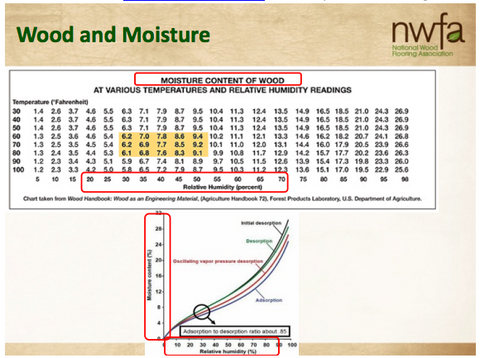
As mentioned above hardwood flooring enjoys the same humidity conditions as humans. New homes are built to be energy efficient and as a result become too air tight. Homeowners do not know how to operate and maintain the mechanical systems causing bad air in the house. Breathing problems are one of the main reasons for visits to Hospital Emergency Rooms in North America. As you can see on the “Humidity and your Health” chart below it is ideal for health purposes to keep humidity levels as close to 40% as possible. If you have pets and your humidity is above 50% it is almost guaranteed you have dust mites in your home. If you or your family seem to always have colds in the winter months it is likely caused from the low humidity and quality of air in your home.
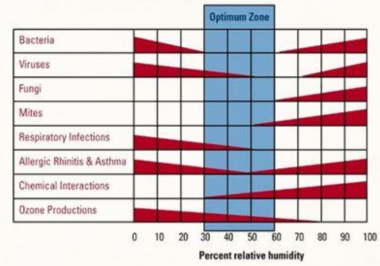
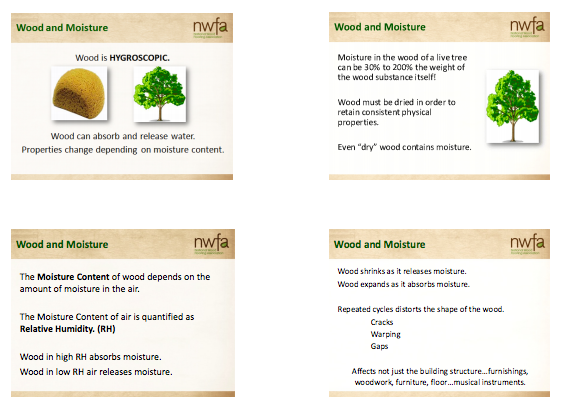
Understanding that solid wood moves 50 times more widthwise than it will lengthwise, going lengthwise into tile is not an issue; however widthwise it is very important.
The numbers on the accompanying chart reflect the dimensional change coefficient for various species, measured as tangential shrinkage or swelling within normal moisture content limits.
The dimensional change coefficient can be used to calculate expected shrinking or swelling. Simply multiply the change in moisture content by the change coefficient, and then multiply by the width of the board. Example: A red oak (Change coefficient .00369) board 5” wide experiences a moisture change from 6% to 9% - a change of 3 percentage points.
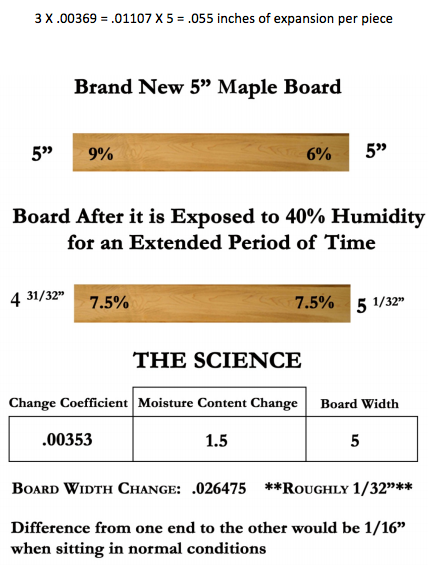
How much can temperature and humidity affect the dimensions of a hardwood floor? Take a look at the same 5” oak board.
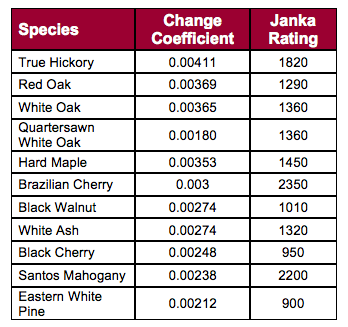
Download printable PDF click here>